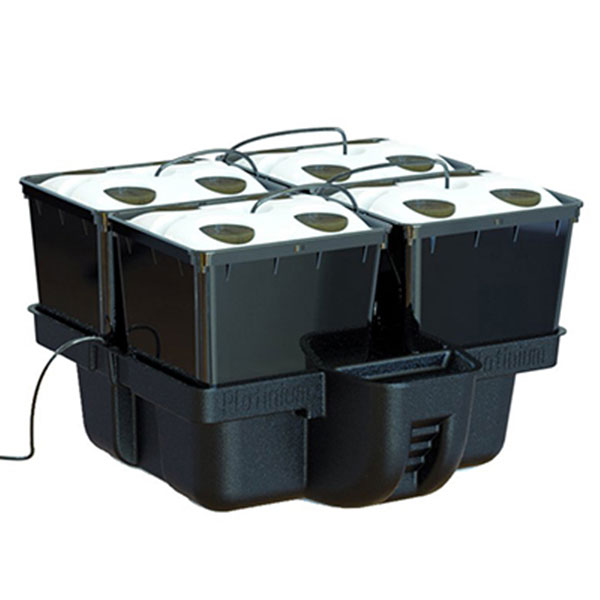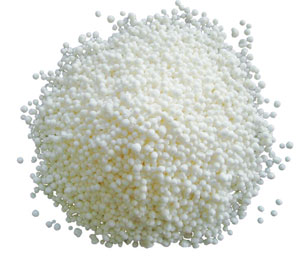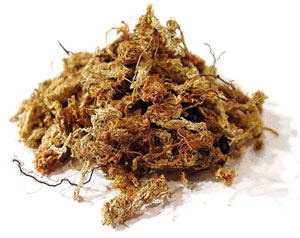HYDROPONIC SYSTEMS
Hydroponics allows plants to grow without soil, but on inert substrates: they contain no nutrients and retain much more oxygen than soil, which allows the roots to absorb fertilizers efficiently.

Examples of inert substrates: Clay pebbles, perlite, chili peat moss... More info in the Pots and Substrates tips.



The horticulturist brings these nutrients by water, which circulates continuously in the irrigation system.
Hydroponic gardens offer unparalleled yields compared to soil-based crops, but require more attention than traditional systems because of the accelerated growth of the plants. Hydroponic systems are differentiated by the way the nutrient solution is distributed.
Among the active systems, there are :
- drip (hydroponic) - Active hydroponic systems are ideally suited for growing fast-growing plants.
- alternate filling/draining(tidal tables)
- NFT (film nutrient technique)
- Aeroponics
History
 This technique has existed since the dawn of time.
This technique has existed since the dawn of time.
The hanging gardens of Babylon are one of the oldest examples, as well as the vegetable gardens of the Peruvian people cultivated on the surface of high mountain lakes such as the Titicaca.
The Aztecs, for their part, settled in the swamps near the future city of Mexico and gardened on rafts of sorts, letting the roots of the plants plunge into the lakes: without knowing it, they were the precursors of a kind of primitive aquaculture.
The Chinese still use ancestral techniques of cultivation on gravel.
The soilless culture that we know today was born in the 19th century in Germany. It was discovered in the context of research carried out to find out what the plants were eating.
It was not until 1930 that Gericke produced the first commercial hydroponic system in the United States.
During World War II, Americans grew hydroponic vegetables in the volcanic islands of the Pacific to provide vitamins for their troops' health.
Since then, trials have proven the viability of the technique, as well as its economic and environmental potential.
Today, soil-less farming is practiced on millions of hectares around the world. Many fresh vegetables such as tomatoes, cucumbers, zucchini, lettuce, peppers, spinach, beans, carrots, potatoes and herbs, which are grown in greenhouses, are grown above ground, and this is also the case for the majority of cut flowers found in florists. Aeroponics is a system that requires no substrate.
Culture Indoor offers you all the best hydroponic systems available on the market.
Drip system
 Plants grow in a pot filled with clay balls suspended above a tank full of nutrient solution.
Plants grow in a pot filled with clay balls suspended above a tank full of nutrient solution.
This solution is distributed drop by drop at the foot of each plant by tubes or rings. Once drained by the support, it is collected in the reservoir where it is re-oxygenated with an air pump.
The oxygenated solution constantly irrigates the healthy roots which draw their food from it. It is then redistributed to the foot of the plant and so on. The most commonly used supports are clay balls, rock wool, coconut fiber, gravel...
These modular systems can be individual or linked together, fed by a common tank. Pousspouss from Platinium as an illustration.
Do you know the range Platinium?
Discover the drip or hydroponic systems on Culture Indoor. For a first time, we advise you to use the following systems Platinium Hydroponics, they are guaranteed for 10 years, made of 100% recycled ABS plastic, design and modular. You can change hydroponic techniques. Switch from hydroponics to aeroponics easily, keeping the base/some parts of the system. These systems are suitable for all types of growing boxes.
Would you like to know more about the term hydroponics ?
NFT
Seedlings and cuttings are placed on an absorbent mat at the bottom of a covered tray. The nutrient solution flows along the tray, bathing the roots before dripping into the tank. The roots, in the absence of a growing medium, must be constantly moist.
Advantages:
- No root diseases or weeds.
- No need to monitor the interval between watering because the roots never dry out; overwatering is also difficult.
- Unlimited oxygen supply because the roots of healthy hydroponic plants are in direct contact with the air.
Discover the NFT systems on Culture Indoor.
Aeroponics
No substrate is used. The roots are kept in suspension in a darkened spray chamber to prevent the development of algae. The nutrient solution is sprayed on the roots at regular intervals. Constantly exposed to oxygen and moisture, they reach their maximum absorption potential. If the pH changes and the solution changes, there is no buffer. Rooted seedlings and cuttings grown in aeroponics grow at an exceptional rate. To learn more about aeroponics, visit our Aeroponics Tips page.
Discover the aeroponic systems on Culture Indoor.
Tide tables
Tide tables are popular because they have proven to be easy to use and maintain. Irrigation is done by alternating filling and draining. The plants, in individual pots or in rockwool cubes, are installed on a growing tray containing 2 to 5 cm of nutrient solution. A labyrinth of gutters drains the solution to the reservoir. The pump floods the growing tray at regular intervals. The rockwool blocks or pots are immersed from below, which expels the oxygen-depleted air. The water then drains away, creating an oxygen-rich airflow for the roots.
This prevents stagnation and the creation of residues. Nutrients are better absorbed, which favors the growth of the plants and their general condition. The tide table follows closely the NFT system. It allows a yield just as consistent, with a more reliable system.
Discover the tide table systems on Culture Indoor.
Vertical cultivation
Vertical cultivation offers many advantages from an economic point of view. It allows a maximum output on a minimal surface of culture. The plant walls are placed on the wall, the irrigation systems are varied. They can complete a ground system for a more efficient yield.
Platinium innovates with its Pyramid system, a vertical and aeroponic system that allows to grow up to 200 plants on only 2m² (2m x 1m).
LEXICON
*Hydroponics : Comes from the Greek, hydro = water, ponos = work. Hydroponics is an ancient technique that is the art of growing plants in water. Today, hydroponics is a term for growing plants without soil, on inert substrates. But different inert substrates imply different growing methods (commonly called soilless growing). There are different hydroponic systems*: drip*, aeroponics*, tidal tables*, NFT*.
*Systems: Refers to the containers of substrates or nutritive solutions that feed the plants. Each container works in a specific way.
*Aeroponics : Not to be confused with aquaponics, aeroponics is a technique of soilless culture. The principle of this type of cultivation is to spray a nutrient jet (in the form of mist) to create an oxygenated environment for the roots. In order to spray and not water the nutrient solution on the roots, it is necessary to have a pump that can develop a consequent pressure.
*Drip: The system consists of 2 tanks. The first tank contains the solution, the second contains the substrate (clay ball, coco...) and the plants. A pump, with water or air, brings the solution to the surface of the substrate. The solution flows through nozzles or a pierced ring. The solution, will thus water the roots and then fall back into the first tank, and so on.
*Tide table: The principle is to feed the plants continuously but they will be fed intermittently. Each watering cycle = 1 tide. Once the table is full and the substrate is sufficiently irrigated, the pump stops feeding the plant with solution and the solution can flow out through the drainage holes.
NFT* (Nutrient Film Technique): The NFT consists in making water circulate continuously at the foot of the rockwool cubes. The water that circulates continuously on this mat forms a nutrient film.
Find all our tips for your indoor culture:
- Indoor growing tips : Light
- Indoor growing tips : Air
- Growing tips for indoor plants: The Substrate
- Growing tips for indoor plants : Water and fertilizers
- Growing tips for indoor plants : Germination and Cutting
- Growing tips for indoor plants : Growth
- Growing tips for indoor plants : Flowering
- Growing tips for indoor plants : The growing room
- Tips for indoor growing : Systems
- Growing tips for indoor plants : Water control
- Growing tips for indoor plants : Aquaponics
- Growing tips : Accessories